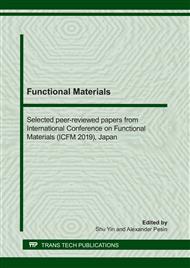p.3
p.9
p.15
p.21
p.27
p.33
p.39
p.45
Assessment of Induced-Delamination of Drilled Date Palm Fronds Polypropylene Bio-Composites
Abstract:
Utilization of natural fibers in a form of filler materials in composite structures has been successfully implemented in a broad range of industrial applications. In general, natural fibers have many advantages over synthetic counterparts, (e.g. glass and carbon) including lower density, ability to muffling vibration as well as its positive environmental impact. Hence, natural fibers can be used to enhance the characteristics of composite polymers. Expected improvements may include good thermal and acoustic insulating properties and better electrical resistance. However, in order to qualify any new developed material for commercialization, machining such as drilling, milling, cutting, bending, etc., becomes essential. In this experimental work, a newly developed Chopped Date Palm Fronds Polypropylene (CDPF/PP) bio-composite, which was mechanically characterized in a previous study, is investigated against conventional drilling operation. The data obtained through machining are processed and statistically analyzed based on Design of Experiment (DoE) to achieve the optimal input parameters using ANOVA and regression model. Moreover, the statistical evaluation of the results is useful to develop mathematical models that can be used with confidence to predict the drilling delamination for future works. In specific, optical microscopy was utilized to measure the dimension of the machined bio-composite surface to calculate the delamination factor.
Info:
Periodical:
Pages:
3-8
Citation:
Online since:
May 2020
Keywords:
Price:
Сopyright:
© 2020 Trans Tech Publications Ltd. All Rights Reserved
Share:
Citation:


